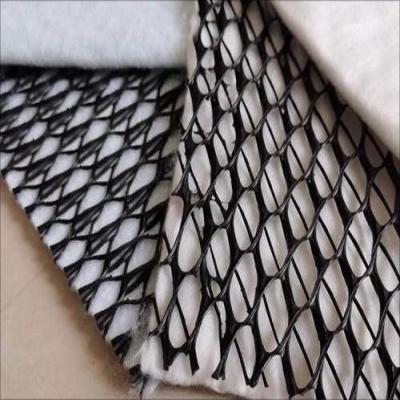In highway construction, the cut-fill junction roadbed is a weak link in the roadbed structure, often causing uneven settlement, pavement cracking and other diseases due to groundwater infiltration, differences in fill and excavation materials and improper construction technology. Three-dimensional composite drainage network is a material commonly used to solve these problems. So, what are its applications in the cut-fill junction roadbed?
1. Causes of diseases and drainage requirements of the cut-fill junction roadbed
The diseases of the cut-fill junction roadbed mainly come from the following contradictions:
1. Groundwater infiltration and material differences
The junction between the fill area and the excavation area often forms a hydraulic gradient due to the difference in groundwater levels, resulting in softening or scouring of the fill.
2. Construction process defects
In traditional processes, problems such as irregular step excavation and insufficient compaction at the cut-fill junction are common.
2. Technical advantages of three-dimensional composite drainage net
1. Efficient drainage and anti-filtration performance
The three-dimensional composite drainage net is composed of double-sided geotextile and the middle three-dimensional mesh core. The mesh core thickness is 5-7.6mm, the porosity is >90%, and the drainage capacity is 1.2×10⁻³m²/s, which is equivalent to a 1m thick gravel layer. The drainage channel formed by its vertical ribs and inclined ribs can maintain stable water conductivity under high load (3000kPa).
2. Tensile strength and foundation reinforcement
The longitudinal and transverse tensile strength of the three-dimensional composite drainage net can reach 50-120kN/m, which can replace the reinforcement function of some geogrids. When laid at the junction of fill and excavation, its mesh core structure can disperse stress concentration and reduce differential settlement.
3. Durability and construction convenience
It is made of high-density polyethylene (HDPE) and polyester fiber composite, which is resistant to ultraviolet rays, acid and alkali corrosion, and has a service life of >50 years. Its lightweight characteristics (weight per unit area <1.5kg/m²) make it easy to lay manually or mechanically, and the construction efficiency is 40% higher than that of traditional gravel layers.
III. Construction points and quality control
1. Base surface treatment
The excavation width of the step at the junction of fill and excavation is ≥1m, the depth is to the solid soil layer, and the surface flatness error is ≤15mm. Remove sharp objects to avoid piercing the drainage net.
2. Laying process
(1) The drainage net is laid along the axis of the roadbed, and the main force direction is perpendicular to the step;
(2) The overlap is fixed by hot melt welding or U-shaped nails, with a spacing of ≤1m;
(3) The maximum particle size of the backfill is ≤6cm, and light machinery is used for compaction to avoid damaging the mesh core.
3. Quality inspection
After laying, the water conductivity test (standard value ≥1×10⁻³m²/s) and the overlap strength test (tensile strength ≥80% of the design value) should be carried out.
As can be seen from the above, the three-dimensional composite drainage network can improve the stability and durability of the fill-excavation junction roadbed through its advantages of efficient drainage, tensile reinforcement and durability.
Post time: Jun-30-2025





